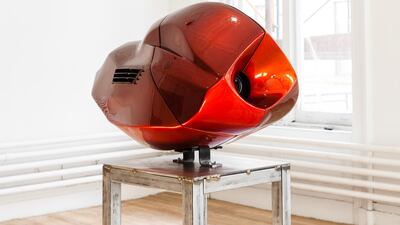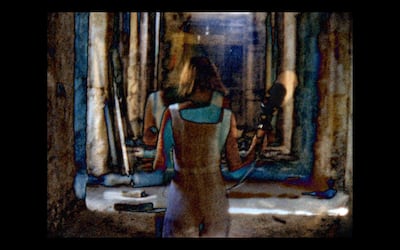Two years ago, the Egyptian-born curator Mai Abu ElDahab took over the Young Arab Theatre Fund (YATF), and started thinking differently about what an arts organisation could do.
She began by changing the name of the Brussels-based foundation, which had long since ceased to be solely about theatre, and retitled it Mophradat, or “vocabulary” in Arabic.
Now Mophradat has announced the first round in Consortium Commissions, its programme of collaborations between young Arab artists and European and North American art institutions.
“I no longer wanted to follow the model of a festival or a touring exhibition in presenting work,” says Abu ElDahab, “But I still wanted to be involved in exhibitions and in working more closely with artists. This is why we came up with the idea of working with the consortium.”
The two-year programme involves collaboration with art institutions which choose an artist to work with. This year, the selection included the likes of Yazan Khalili, Shadi Habib Allah, and Basma Alsharif, who are each given the opportunity for shows at two institutions.
Most of the institutions on the programme, such as the Museum of Contemporary Art in Toronto, the CCA in Glasgow, and K W in Berlin, are medium-sized public institutions, whose financial situations have grown more precarious over the past decade. In Europe, the economic downturn of 2008-2009 meant a drop in public funding levels that has never completely recovered. Meanwhile, major institutions – boldface names such as Tate Modern in London or the Museum of Modern Art in New York – have grown and are better equipped to run patronage schemes that attract an increasing share of philanthropy and bequests.
Mophradat's programme is an exemplar of the collaborative ethos that has emerged among smaller institutions, which join to loan works, produce shows, submit funding bids, and finance commissions. The organisation L'Internationale, for example, comprises six key European institutions which work together on multi-disciplinary programmes and agitate for the place of smaller organisations in the art world ecosystem.
In the UAE, this role is being pioneered by Art Jameel, which has used partnerships to extend its profile, knowledge base, and the opportunities it can offer to the artists it works with. It is partnering with the Metropolitan Museum in New York, the V&A in London, and the residency organisation Delfina in London in a variety of capacities.
With Consortium Commissions, Mophradat is supporting both the artists and the organisations’ ability to show younger work.
Abu ElDahab was raised in Egypt but has long been based in Belgium, and her projects for Mophradat reflect the fact that geographically based criteria don't entirely jibe with the hybrid character of many people's identities, in particular those from the Arab region. Habib Allah, for example, is Palestinian but lives in New York. Jasmina Metwaly, another Consortium Commissions artist, was born in Warsaw to an Egyptian father and Polish mother, and is now based in the Egyptian capital, Cairo.
As Abu ElDahab says: “We are focused on creating professional opportunities for artists from the Arab world – we always say Arab world, because it’s vague. And we like that vagueness.”
The YATF was founded in 2004 by Tarek Abou El Fetouh to help support Arab artists and independent art spaces, and was best known for Meeting Points, a roving biennial that was highly important for showing new Arab work, particularly in performance, and for connecting many different Arab art scenes.
But the organisation suffered after the travel restrictions of the Arab uprisings after 2011.
“The project slowed down and became much more often presented internationally than within the region,” says Abu ElDahab.
When Abu ElDahab began as director of YATF, she was keen to transform it into a regionally-focused organisation that would not be solely defined by its region – a paradox that reflects the complex and variable role that identity plays within contemporary artistic practice.
______________________
Read more:
The ‘mosaic’ of private art foundations shaping the scene in the UAE
Rise of the art residencies in the UAE
Electric botanical garden to open on Dubai Creek
______________________
“I thought: ‘Here’s an organisation with a history and some resources for the moment,’” she says. “‘What can I do, as someone who has been working in a global art scene?’ I started to think of what’s interesting for the region, which I realised was a really uninteresting way to think. The thing to consider is what is an interesting art organisation anywhere today, and ecology of art and all the different kinds of projects that we would want to be involved, so that cumulatively this would help to generate new ideas and new models for work.”
With this in mind, Mophradat’s activity, which are mostly grant-funded by organisations such as the Ford Foundation and the Andy Warhol Foundation, support different kinds of art professionals, such as curatorial training residencies or the programme Orbitals, which funds four curators from the Arab region to go on research trips to other art scenes (this year, Mexico City).
It’s a kind of leveraging of impact: small organisations, light on their feet, find new ways to play crucial roles.



